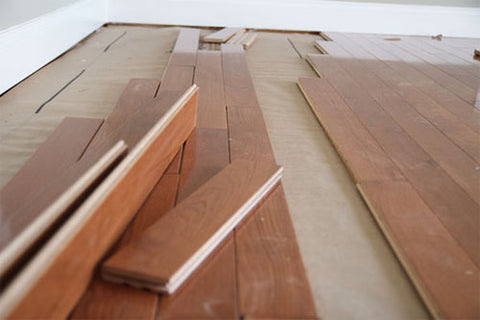Avoid a Flooring Nightmare - How to Acclimate Hardwood Flooring
You're thrilled—the wait is finally over!
The hardwood flooring you've been eagerly anticipating has just arrived, and you're ready to dive into your weekend warrior project.
You can already picture the pride you'll feel after installing those stunning new floors yourself—not to mention the cash you'll save by doing it solo.
But before you roll up your sleeves, there’s one important step you can’t skip.

This step is absolutely critical—it lays the foundation for your entire flooring project and protects the investment you’ve made in your beautiful new hardwoods.
Skip it, and you risk serious damage to those planks you’ve been dreaming about.
Before you install a single board, you must acclimate your hardwood flooring.
Acclimation allows your wood to adjust to its new surroundings. For it to work properly, the temperature and humidity of the hardwood must align with the conditions of the room. If they don’t, your floors could shrink, swell, buckle, cup—or suffer permanent structural damage. Definitely not the outcome you want.
There are two ways to acclimate your hardwoods:
- Keep them in their original boxes.
- Remove them from the boxes and stack them in the room.
Either way, give your floors time to settle in—you’ll thank yourself later.
Keep Hardwoods Inside of the Boxes
If you decide to leave the wood in its boxes during acclimation, be sure to open both ends of each box and lay them flat across the floor, spaced throughout the room.
Short on space? No problem—you can stack the boxes. Just be sure to stagger the stack to promote better air circulation between them. The goal is to let the wood breathe and adjust evenly.
Take Hardwoods Out of the Boxes
If space allows, you can remove the individual boards from their boxes and lay them out on the floor in the pattern you plan to install.
Not sure which method is best? It depends on your specific wood species, grade, and how much room you have. Always refer to the acclimation guidelines included with your order.
That said, here are some general best practices to keep in mind:
How to Acclimate Hardwood Flooring: Inside the Boxes
- Make sure the room or level where the flooring will be laid is an enclosed space.
- Between 5 and 10 days ahead of time, check to see if the temperature and humidity of the space is at normal living conditions. In other words, let the heat or air run as it would normally for at least 5 days. Between 60 and 80 degrees Fahrenheit is a good range when it comes to the temperature. The humidity level should be around the yearly average for the area.
- If the temperature and humidity of the room is off, use a heating and/or air conditioning system to balance it out. Don’t bring the hardwoods into the space until the heating or air has been running for at least 5 days, and wait 7-10 days before actually installing them.
- Open the boxes and lay them flat in the room where they’ll be installed. If, because of space, you do stack the boxes, try to stagger them to expose as much of the boxes to the open air as possible.

How to Acclimate Hardwood Flooring: Outside the Boxes
Follow steps 1-3 above, but instead of laying the opened boxes flat across the floor, take the hardwoods out of their boxes and lay them out as you’re going to install them. Lay them out and piece them together like you would a puzzle. Doing so will help you see where the transition lines will go and make the nailing-down process go by much quicker.
Taking the hardwoods out of the boxes is the best way to acclimate them. Air can hit the boards on every side.
It’s important to acclimate your hardwoods before installing them. Doing so can be the difference between an installation done well and an installation gone bad.
Looking to install hardwood flooring in your home or other property?
Order your hardwoods today!

